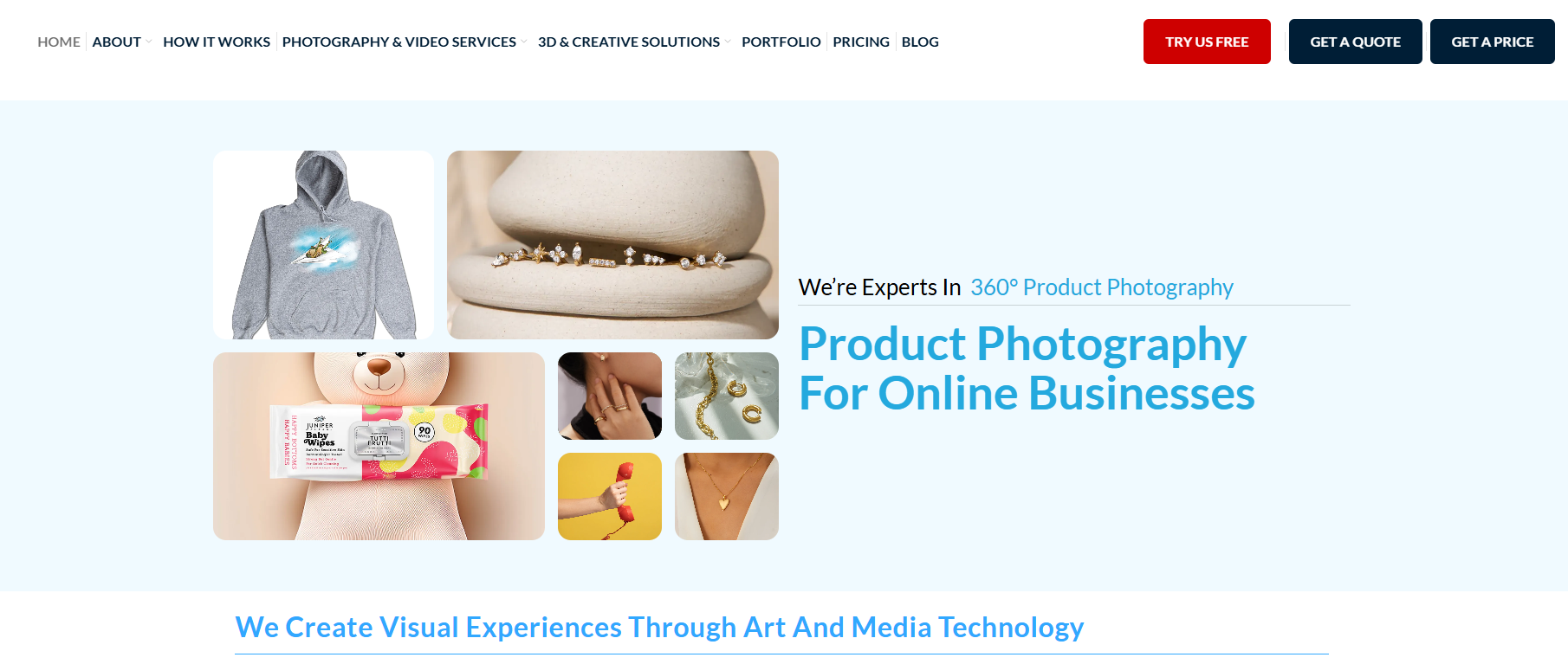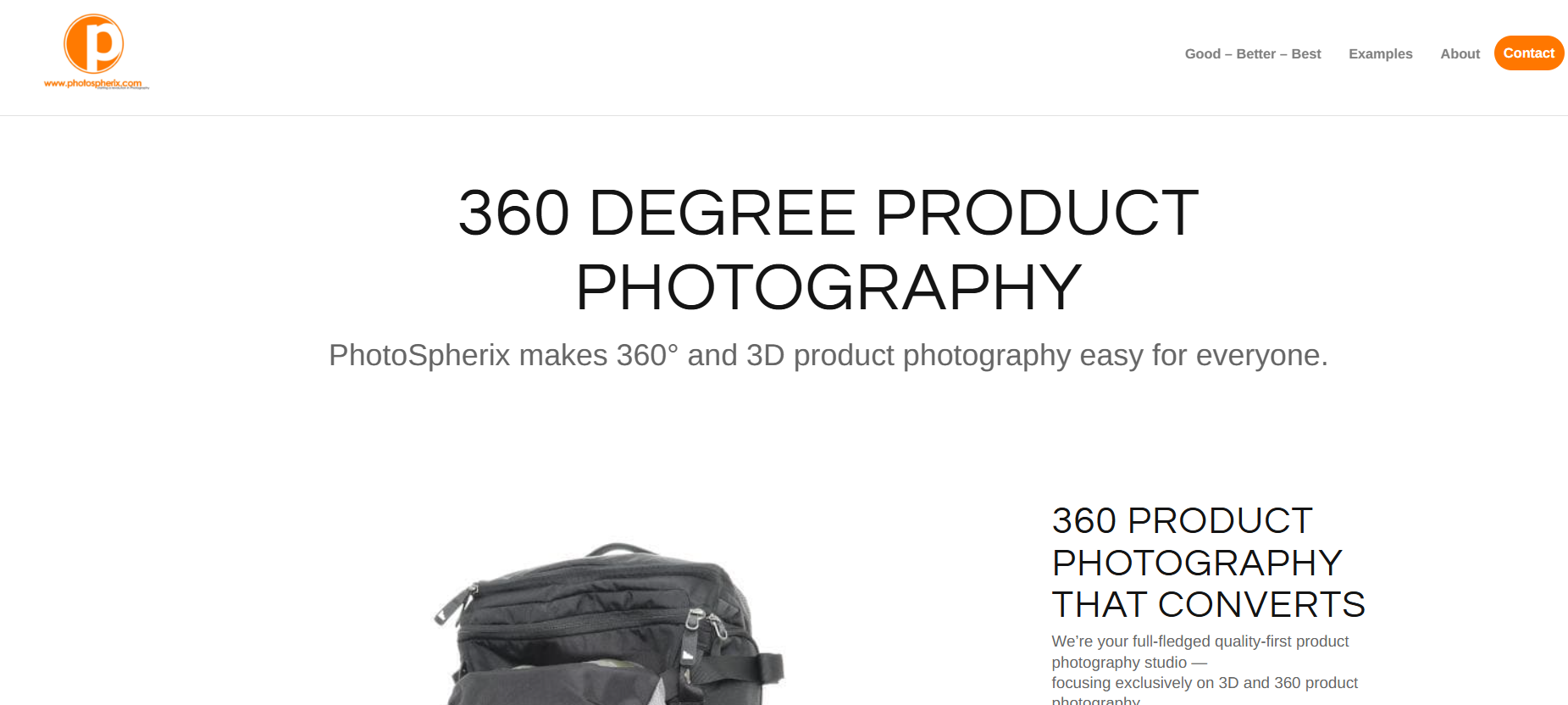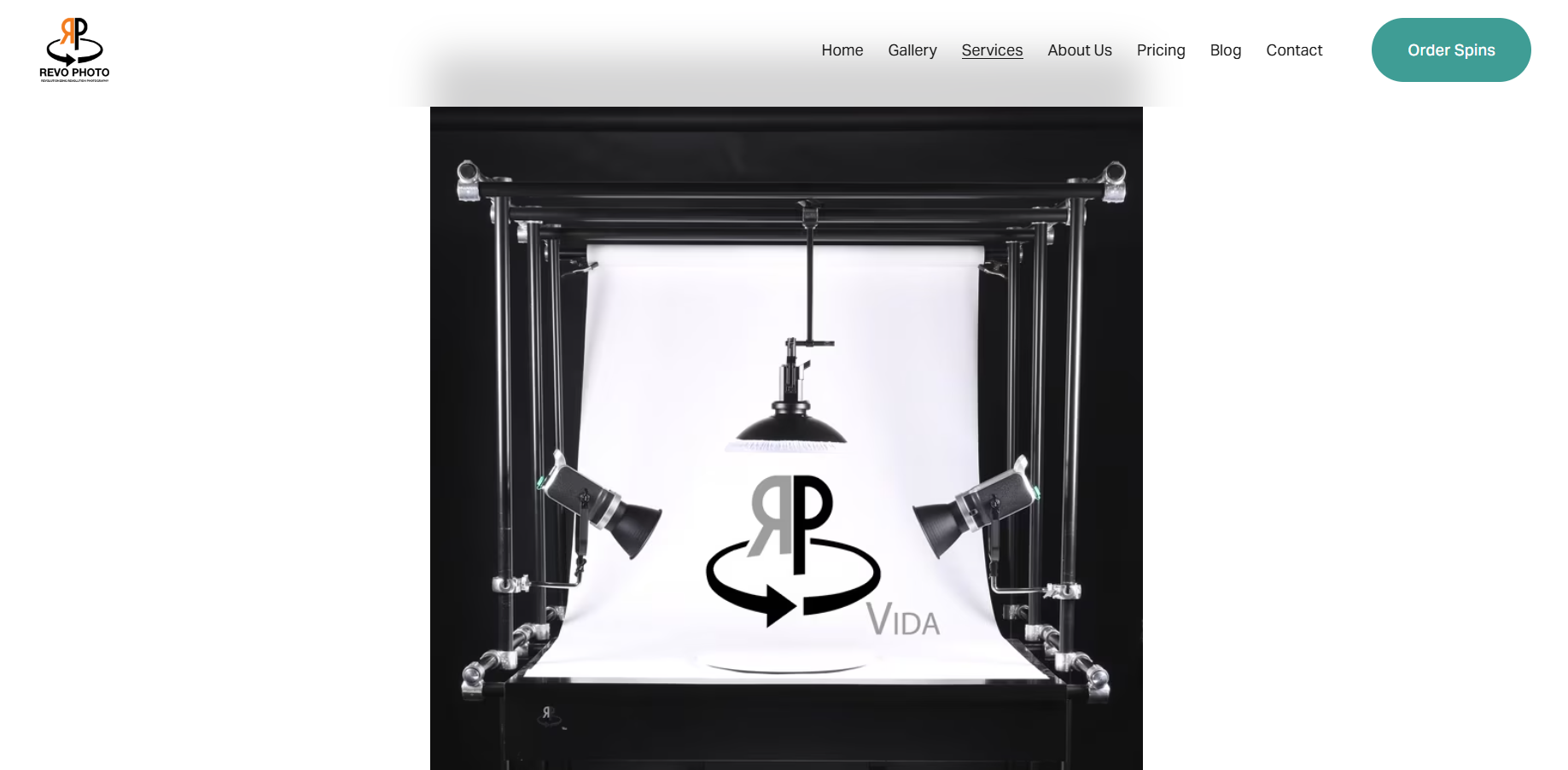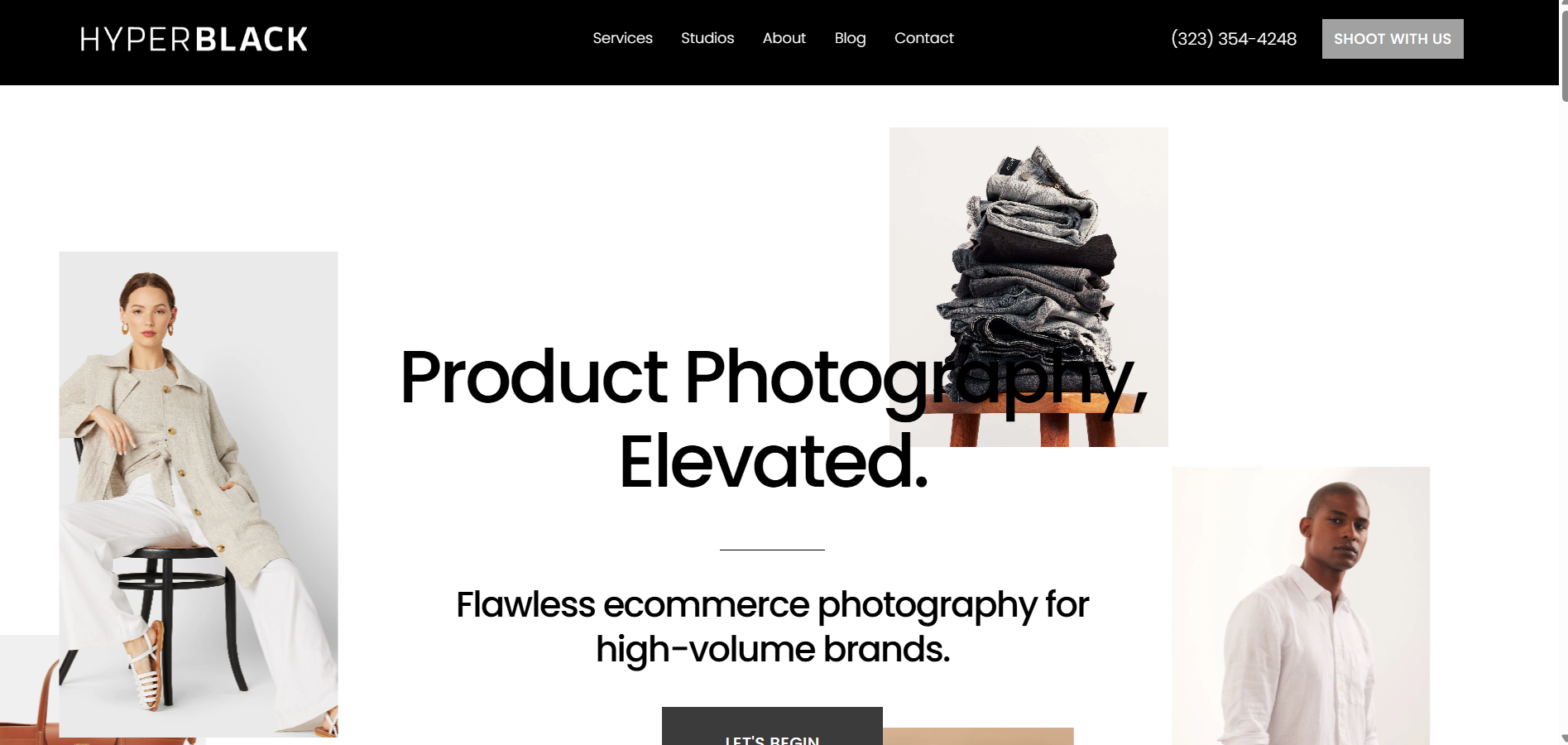With the continued rise of online shopping, the need for engaging product presentation has never been more critical. Over the past decade, the number of global digital buyers has surged dramatically, and businesses have responded by upgrading how they showcase products online.
Among the most powerful visual tools emerging in eCommerce is 360-degree product photography. Unlike traditional still images, 360° photos offer an interactive shopping experience—allowing customers to view products from every angle, almost as if they’re holding them in their hands.
What Is 360-Degree Product Photography?
360-degree product photography involves capturing multiple images of a product as it rotates on a turntable. These images are then compiled into an interactive format that allows the viewer to spin the product around—similar to a rotating GIF or video loop.
Typically, 360 photos are composed of 24, 36, or 72 frames, depending on the level of smoothness you want. The higher the frame count, the more fluid and realistic the rotation appears. This method requires a motorized turntable, consistent lighting, and precise camera positioning.
Why 360-Degree Product Photography Matters for eCommerce
In today’s competitive eCommerce landscape, product presentation can make or break a sale. While traditional still images are useful, they often fall short in conveying the full picture. That’s where 360-degree product photography comes in.
1. Enhances Customer Experience
360-degree photos give shoppers full control to view a product from every angle. This immersive interaction mimics the in-store experience and allows customers to inspect products as if they were physically holding them.
2. Boosts Conversion Rates
Interactive product visuals grab attention and keep users engaged longer. As a result, they help increase trust and reduce hesitation, which leads to higher conversion rates and more sales.
3. Reduces Return Rates
When customers have a clearer understanding of what they’re buying, they’re less likely to be disappointed. 360 images provide comprehensive visual information, helping reduce returns due to unmet expectations.
4. Creates a Lasting Impression
360 product images are memorable and visually impressive. This helps in brand recall and leaves a positive impression that encourages repeat visits.
5. Improves SEO and Google Rankings
Google favors engaging, high-quality content. Interactive images can increase user dwell time and lower bounce rates—both of which can boost your search rankings and organic traffic.
6. Gives a Competitive Edge
Most businesses still rely heavily on static imagery. By integrating 360-degree visuals, your brand appears more innovative, tech-savvy, and trustworthy, giving you a leg up on the competition.
7. Versatile Across Devices and Platforms
360 product images are responsive and work seamlessly on websites, mobile devices, apps, and marketplaces like Amazon or Shopify, ensuring consistent quality and usability.
8. Cost-Effective Marketing Tool
Though it seems advanced, 360-degree photography is affordable, especially considering the long-term ROI. It not only increases conversions but also helps in building brand authority.
360 vs. Still Photography – Which Is Right for Your Business?
When it comes to showcasing products online, choosing between 360-degree photography and still images can significantly impact how customers perceive your brand and make purchase decisions.
Each format has its own strengths, and the best choice often depends on your product type, business model, and customer expectations.
Let’s compare the two:
Still Product Photography
What It Is:
Traditional product photos taken from fixed angles—usually front, side, top, or close-up views.
Best For:
- Simple or uniform items (e.g., books, mugs, T-shirts)
- Fast production on a tight budget
- Platforms requiring specific image formats (like Amazon white background images)
Pros:
- Faster and more affordable to produce
- Easier for A/B testing or social media use
- Great for quick, visual browsing
Cons:
- Limited view—can’t show all angles
- Less interactive or immersive
- May lead to more product-related questions or returns
360-Degree Product Photography
What It Is:
A series of images stitched into an interactive format that allows users to rotate the product and view it from multiple angles.
Best For:
- Detailed or high-value products (e.g., electronics, shoes, jewelry)
- Brands focused on premium customer experience
- Products with multiple features or intricate designs
Pros:
- Provides a realistic, hands-on feel for customers
- Builds trust and boosts conversions
- Reduces return rates by giving a complete visual representation
Cons:
- Requires more time and equipment
- Slightly higher initial cost
- Not always necessary for simple products
How to Decide: Key Considerations
| Factor | Still Photography | 360 Photography |
| Product Complexity | Good for basic products | Ideal for complex/detailed items |
| Budget Constraints | Lower upfront cost | Higher ROI over time |
| Customer Expectations | Sufficient for quick purchases | Best for informed buying |
| Brand Image | Basic presentation | Premium, tech-forward branding |
| Sales Channels | Great for catalogs & ads | Excellent for websites & interactive stores |
How Much Does 360 Product Photography Cost?
The cost of 360-degree product photography depends on the service you choose. Typically, you will send the products to a studio, and they will handle the shoot for you. Pricing differs based on specific requirements and is influenced by several factors.
First, what type of product do you have? What is its size? Will a model be used alongside the product or not? Second, consider the type of shoot; do you prefer 24 frames, 36 frames, or 72 frames?
Keep in mind that the more frames you select, the smoother the photograph will appear. Fewer frames result in less smooth photos. Third, how many photographs are you ordering? A larger quantity usually reduces the cost, while a smaller quantity increases it.
Based on these factors, 360-degree product photography pricing ranges from $5 to $200 per image. There are various options available, so don’t hesitate to explore this service even if your business is small.
Summary Table
| Scenario / Provider | Price Range |
| Basic automated/robotic (bulk, simple items) | ~$20–$40 per product |
| Snap360 (per spin by frame count) | $74–$194 |
| OC Product Photos (bulk frame model) | $125 + $5 per extra frame |
| Retouching Labs estimate (general 360) | $150–$500 per product |
| PhotoSpherix (specific product examples) | $180–$520 per item, bulk as low as $59 |
| ProductFX widget setup | ~$297 per product |
| High-end/furniture shoots | $200/hour or $1,500–$3,000/day |
Key Cost Drivers to Keep in Mind
- Frame Count: More frames = smoother rotation, but higher cost.
- Spin Type: Single-row (1D) spins are cheaper; multi-row or twin-axis (2D/3D) are pricier.
- Product Complexity: Reflective surfaces, large objects, or transparency increase costs.
- Volume Discounts: Bulk orders often see steep rate reductions.
- Additional Services: Editing, rigging, special outputs (like video or AR) add to the cost.
- Turnaround Time: Rush jobs could carry extra fees.
- Tools Used: Robotic/automated setups reduce cost for simple items, while complex manual setups increase prices.
Top 360-Degree Product Photography Studios in the USA (2025)
1. PhotoSpherix (Indianapolis, IN)

A specialist in 360° and 3D product photography for over two decades. PhotoSpherix sets a high standard, offering Good–Better–Best packages starting at $47 per product for single-row rotations, and up to $240+ for high-resolution, multi-row spins. Ideal for brands seeking quality, scaled workflows, and reduction in returns.
2. Snap360 Photography (USA-wide service)

Known for seamless logistics (“You ship it, we snap it”), Snap360 handles everything from lighting to retouching. They cater to platforms like Amazon, Shopify, and Etsy, delivering both still and 360° spin visuals with professional post-production and artist-led composition.
3. Rip Roarin Productions
Offers in‑studio, shipped-in model photography with high-end gear—including Canon and Sony systems. They produce up to three-row spins, deliver files in HTML5, MP4, MP3, and more, and even return your products post-shoot. Perfect for businesses needing assurance and quality.
4. PUREi (Batavia, IL)
Beyond eCommerce, PUREi covers real estate, facility tours, retail spaces, and event venues. Their full-service 360 photography includes planning, pre-production, shoot, post-production, and platform integration—ideal for clients looking for a tailored immersive experience.
5. REVO Photo (Vida Studio System)

REVO provides a proven workflow that can reduce returns, increase time-on-page, and boost conversions. They offer both shoot-and-deliver services and enterprise-level turnkey systems to build your own in-house 360 studio.
6. Additional Mention – Hyperblack Studios (Redding, CA & Chicago, IL)

Though not dedicated solely to 360 lets, Hyperblack is noted among top eCommerce photographers for its immersive visuals, including 360 spins and cinematic product videos, with a focus on customer engagement and technical prowess.
Quick Comparison Table
| Studio | Strengths | Standout Features |
| PhotoSpherix | Decades of experience in 360/3D; tiered pricing | Starts at $47; options up to 72-frame, high-res multi-row spins |
| Snap360 Photography | Nationwide shipping service; expert post-production | Handles white backgrounds, lifestyle, and full workflow via shipping model |
| Rip Roarin Productions | High-resolution multi-row spins; returns products post-shoot | In-studio quality with flexible spin format options (1–3 rows) |
| PUREi | Tailored solutions across industries; end-to-end project management | Great for eCommerce, real estate, events & facility immersive content |
| REVO Photo | Commercial-grade workflows; ROI-focused metrics | Vida Studio system; reduces returns, increases page dwell time |
| Hyperblack Studios | Immersive visuals beyond 360 spins | Combines cinematic product spins with broader eCommerce storytelling |
Choosing the Right Studio for You
- For high-volume eCommerce catalogs: PhotoSpherix or Snap360 offer structured workflows and cost-efficient scalability.
- For premium, multi-row or video-inclusive spins: Rip Roarin and REVO Photo provide precision and advanced output formats.
- For immersive cross-industry needs: PUREi shines with its tailored planning and platform integrations.
- For creative, cinematic presentation: Hyperblack Studios brings 360 spins into rich, story-driven visuals.
Frequently Asked Questions (FAQs)
When Should I Use 360-Degree Product Photography?
If your product has multiple design aspects, textures, or features that buyers need to inspect, 360° is ideal.
What’s the Difference Between 360° and 3D Product Photos?
- 360 Photography: The product rotates while the camera stays fixed.
- 3D Photography: Both the product and camera move, offering more dimensional views.
Types of 360 Photography
- Single-Row Spins: One row, left-to-right movement only.
- Multi-Row Spins: Multiple rows, often referred to as 3D.
- Twin-Axis Spins: Both horizontal and vertical rotation.
How Long Does a 360 Shoot Take?
Typically, 1 to 3 minutes per product, depending on the number of frames and setup efficiency.
Can I Do It Myself?
Yes! With a turntable, consistent lighting, and a DSLR or smartphone, you can shoot your own 360 photos. However, for professional results, studios are recommended.
Final Thoughts
In today’s fast-paced digital marketplace, standing out is critical. 360-degree product photography is more than a trend—it’s a smart investment in your brand’s future. By offering a richer, more interactive shopping experience, you build trust, reduce returns, and convert more visitors into customers.
Whether you’re launching a startup or scaling your eCommerce store, now is the time to explore the potential of 360-degree product photography.




